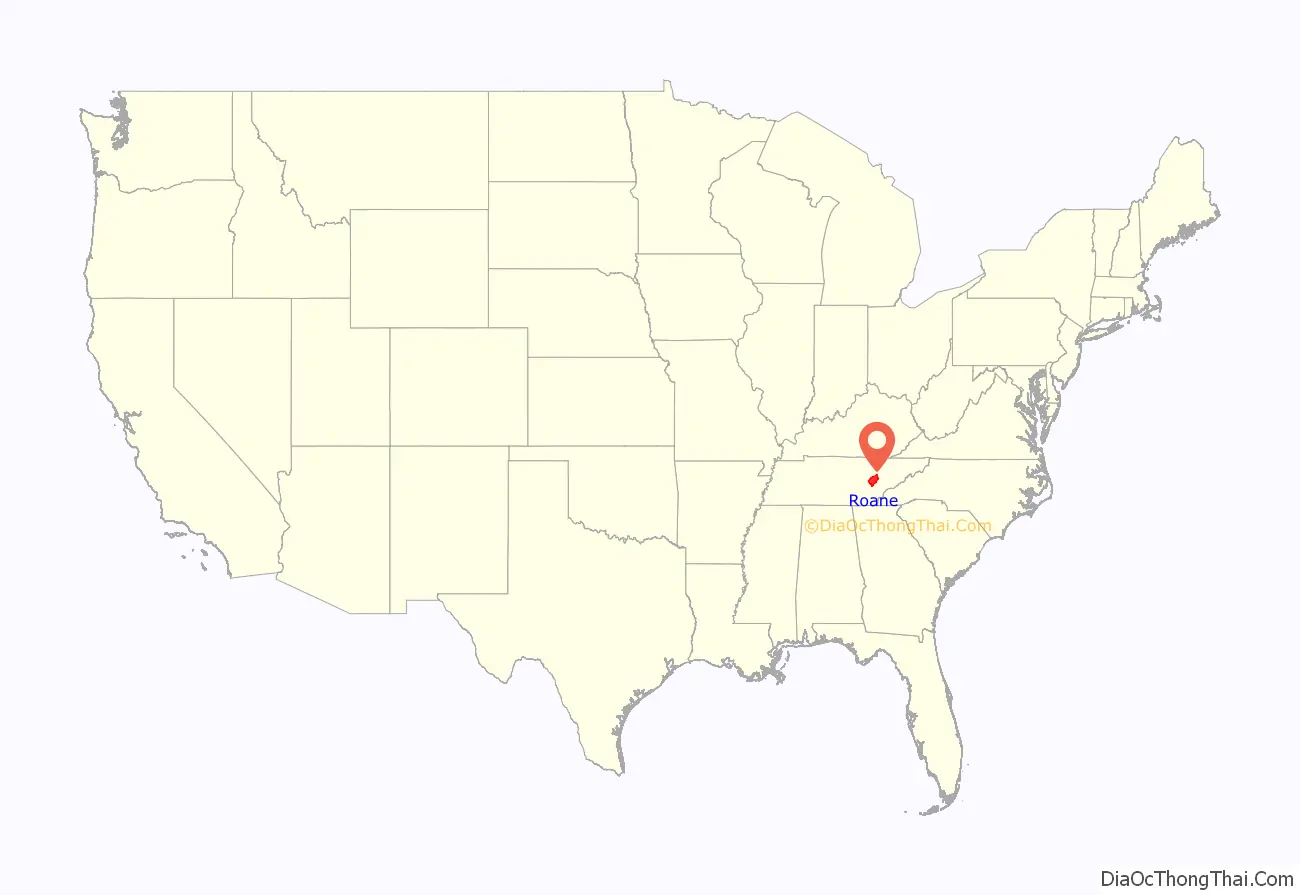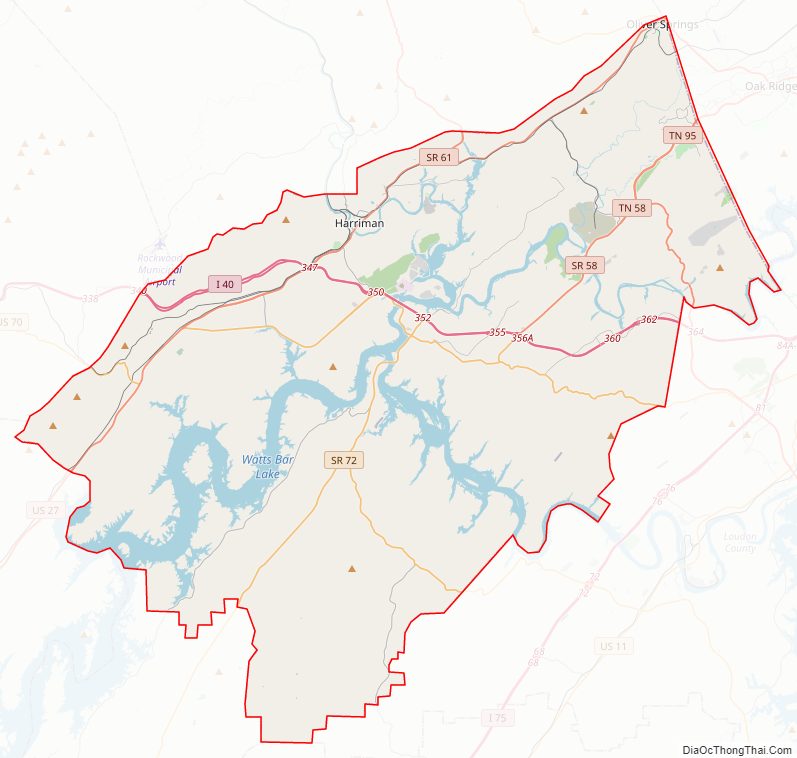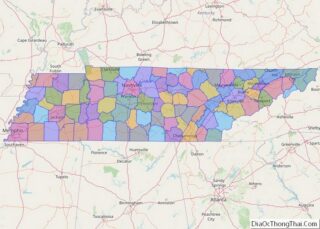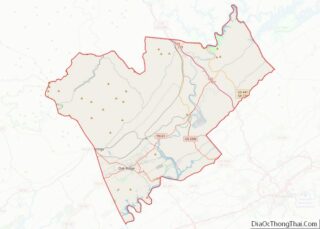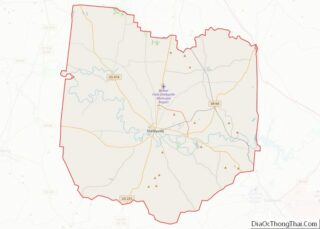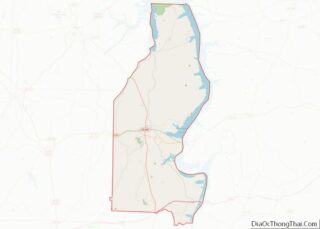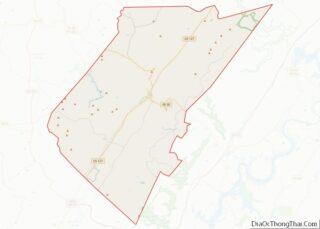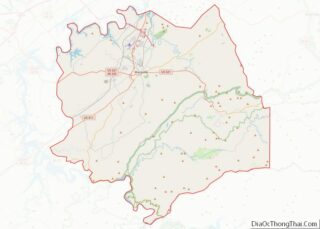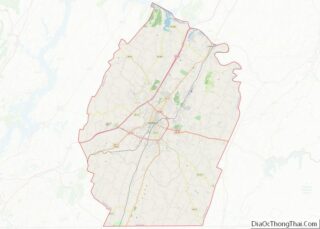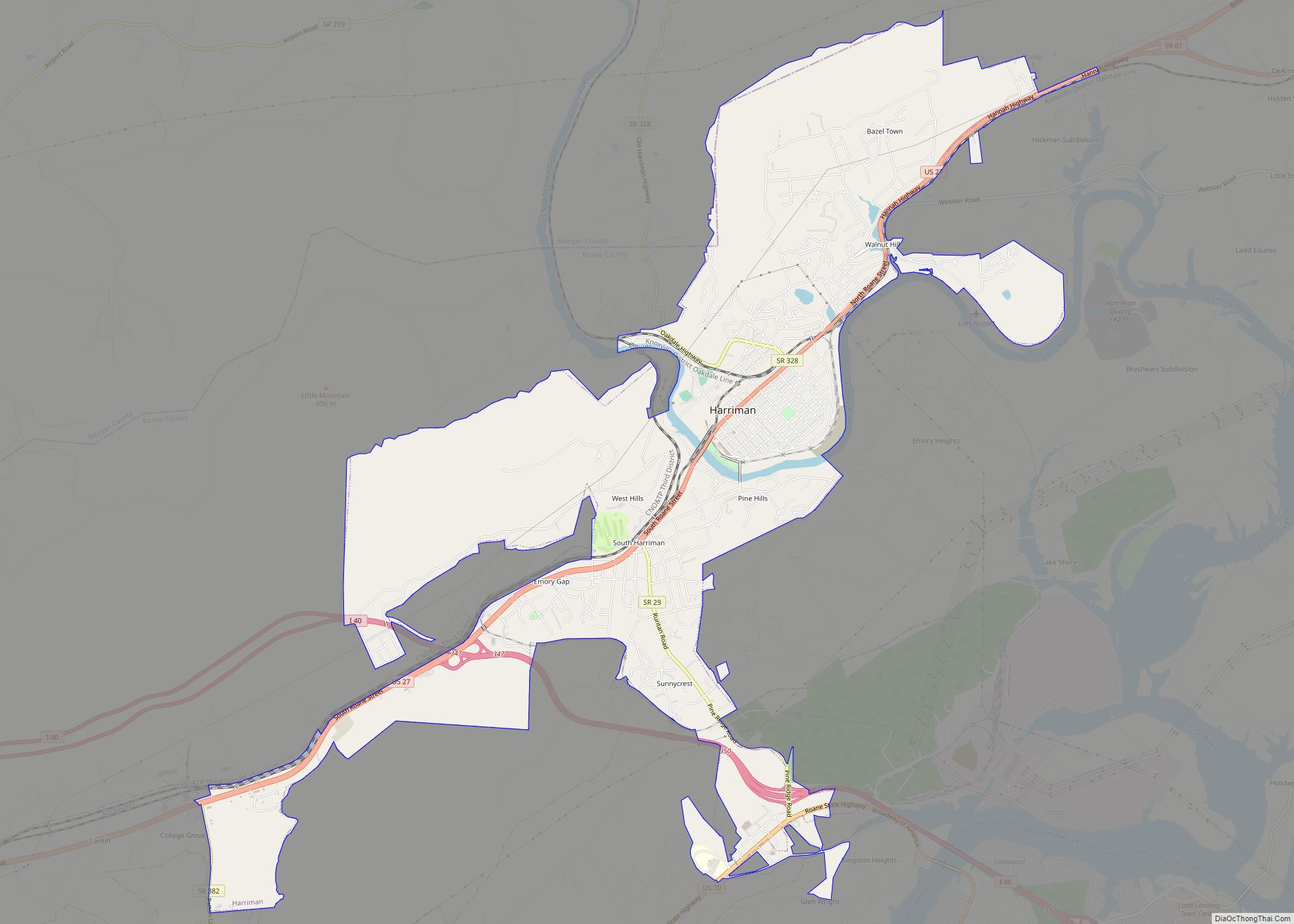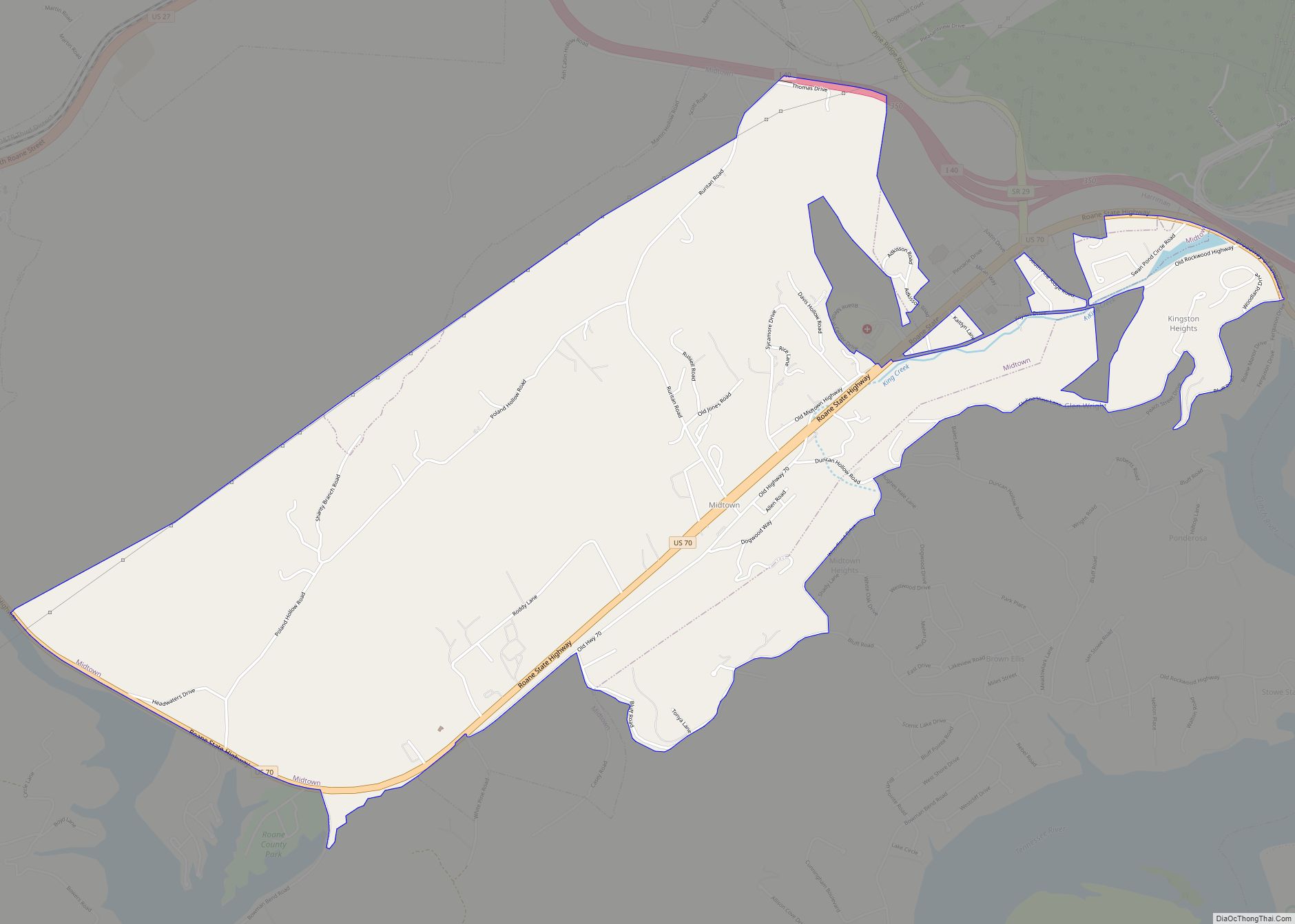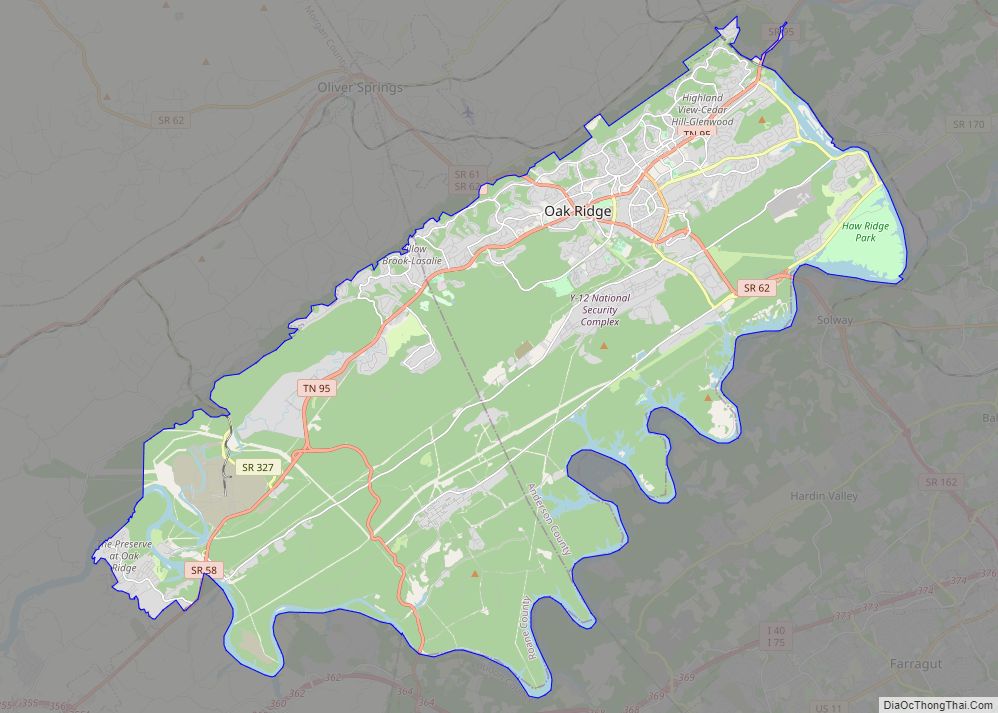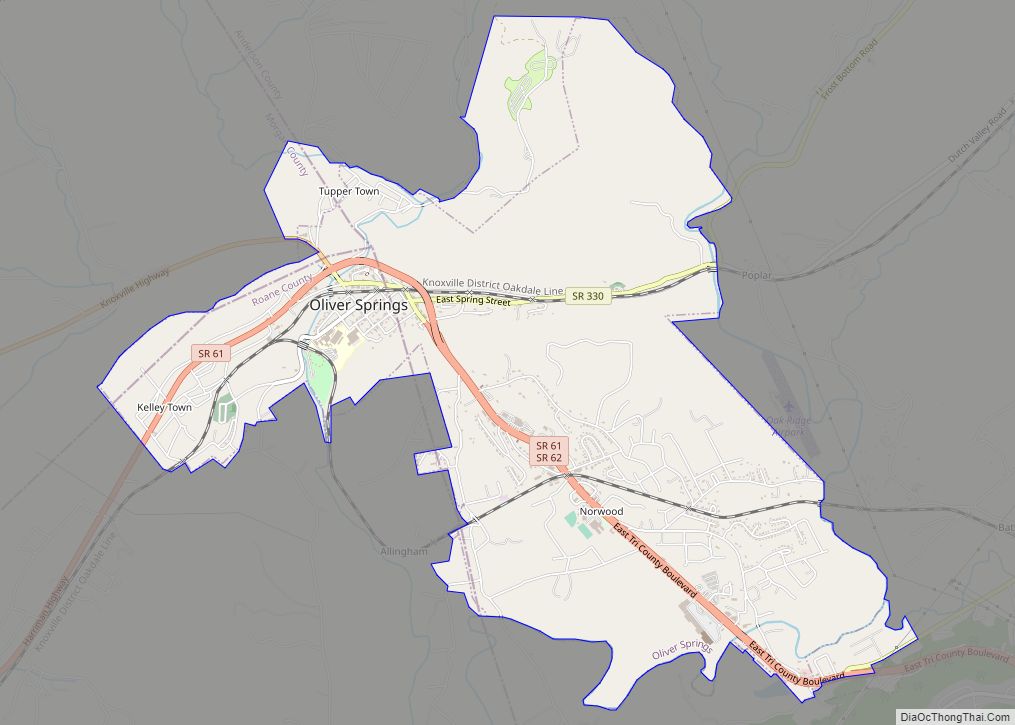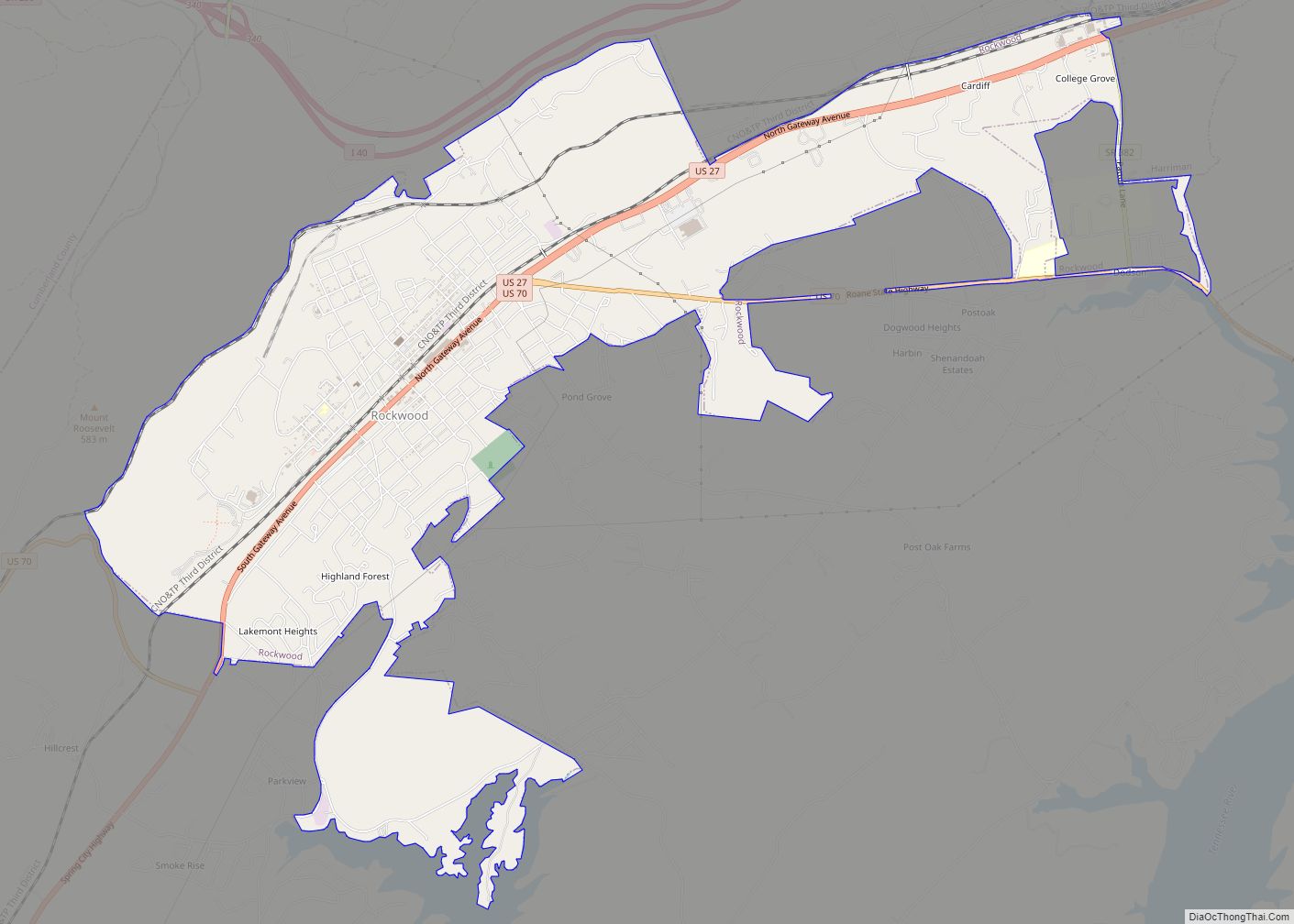Roane County is a county of the U.S. state of Tennessee. As of the 2020 census, the population was 53,404. Its county seat is Kingston. Roane County is included in the Knoxville, TN Metropolitan Statistical Area.
| Name: | Roane County |
|---|---|
| FIPS code: | 47-145 |
| State: | Tennessee |
| Founded: | 1801 |
| Named for: | Archibald Roane |
| Seat: | Kingston |
| Largest city: | Oak Ridge |
| Total Area: | 395 sq mi (1,020 km²) |
| Land Area: | 361 sq mi (930 km²) |
| Total Population: | 53,404 |
| Population Density: | 150/sq mi (60/km²) |
| Time zone: | UTC−5 (Eastern) |
| Summer Time Zone (DST): | UTC−4 (EDT) |
| Website: | roanecountytn.gov |
Roane County location map. Where is Roane County?
History
Roane County was formed in 1801, and named for Archibald Roane, the second Governor of Tennessee. Upon the creation of the Southwest Territory in 1790, the territory’s governor, William Blount, initially wanted to locate the territorial capital at the mouth of the Clinch River, but was unable to obtain title to the land from the Cherokee. Kingston, Roane’s county seat, is rooted in Fort Southwest Point, a frontier fort constructed in the early 1790s.
During the Civil War, Roane County, like many East Tennessee counties, was largely pro-Union. When Tennessee voted on the Ordinance of Secession on June 8, 1861, Roane Countians voted 1,568 to 454 in favor of remaining in the Union. In October 1861, Union guerrilla William B. Carter organized the East Tennessee bridge-burning conspiracy from a command post in Kingston. During the Knoxville Campaign in December 1863, a Union force led by General James G. Spears scattered a small Confederate force led by John R. Hart near Kingston.
In the years following the Civil War, Rockwood grew into a major iron and coal mining center with the establishment of the Roane Iron Company by General John T. Wilder. Iron ore and coal were mined on Walden Ridge and shipped to Rockwood, where the ore was converted into pig iron. The pig iron was then shipped to rolling mills in Knoxville or Chattanooga.
During the late 19th century, northern investors established two planned cities in Roane County— Cardiff and Harriman. Cardiff, located northeast of Rockwood, was planned as a company town to support several proposed mining industries in the area. Harriman was planned as a Temperance Town. Both ventures suffered critical setbacks as a result of the Panic of 1893. Harriman survived, but never grew in the manner its planners had envisioned, while Cardiff failed altogether. During World War II, the federal government created the city of Oak Ridge as a planned community as part of the Manhattan Project to develop the atomic bomb. As a result of the Project, both the K-25 gaseous diffusion plant and the Oak Ridge National Laboratory are located in the county.
Roane County Road Map
Geography
According to the U.S. Census Bureau, the county has a total area of 395 square miles (1,020 km), of which 361 square miles (930 km) is land and 34 square miles (88 km) (8.7%) is water. Three rivers— the Tennessee River, the Clinch River, and the Emory River— pass through Roane County. The Emory empties into the Clinch near Kingston, and the Clinch empties into the Tennessee just downstream from Kingston. The rivers in Roane are mostly part of Watts Bar Lake.
Roane County straddles the geographical boundary between the Tennessee Valley and the Cumberland Plateau, with the latter’s Walden Ridge escarpment visible from much of the county.
Adjacent counties
- Morgan County (north)
- Anderson County (northeast)
- Knox County (east)
- Loudon County (southeast)
- McMinn County (south)
- Meigs County (southwest)
- Rhea County (southwest)
- Cumberland County (west/CST Border)
State protected areas
- Campbell Bend Barrens State Natural Area
- Crowder Cemetery State Natural Area
- Kingston Refuge
- McGlothin-Largen Wildlife Management Area
- Mount Roosevelt Wildlife Management Area (part)
- Paint Rock Refuge
- Watts Bar Wildlife Management Area
